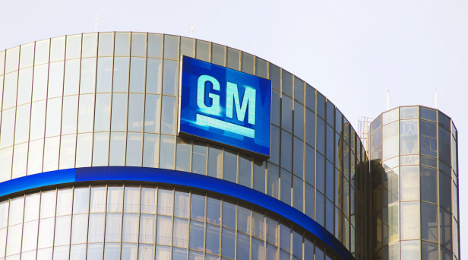3 GM models top 2016 Kogod Made in America Auto Index

By subscribing, you agree to receive communications from Auto Remarketing and our partners in accordance with our Privacy Policy. We may share your information with select partners and sponsors who may contact you about their products and services. You may unsubscribe at any time.
WASHINGTON, D.C. –
American University’s Kogod School of Business released the 2016 Kogod Made in America Auto Index that is geared to provide consumers with what researchers called a more accurate picture of the production process for the most popular vehicles on the road today.
According to the index developed by Kogod professor Frank DuBois, an expert in global supply chain management, the most American-made 2016 models include the Buick Enclave, Chevrolet Traverse, and GMC Acadia.
“A vehicle’s domestic manufacturing composition plays a key role in determining its overall impact on the American economy,” DuBois said. “This knowledge empowers consumers and automakers alike to make better economic decisions about where a vehicle is made, and which cars offer the greatest commercial benefits to the country.”
The Kogod Made in America Auto Index evaluates and ranks 338 models based on country of origin, the American Automobile Labeling Act (AALA), as well as unaddressed AALA factors. The university said DuBois’ method improved on the AALA data by incorporating a more comprehensive research methodology that includes the following seven points derived from publicly available data:
• Profit margin
• Labor
• Research and development (R&D)
• Inventory, capital and other expenses
• Engine
• Transmission
• Body, chassis, and electrical components
According to DuBois, those factors constitute a true “made in America” index, because the American-made label can only reflect a percentage of a product’s content due to the global supply chain operating reality of the entire automotive industry.
Subscribe to Auto Remarketing to stay informed and stay ahead.
By subscribing, you agree to receive communications from Auto Remarketing and our partners in accordance with our Privacy Policy. We may share your information with select partners and sponsors who may contact you about their products and services. You may unsubscribe at any time.
Also, DuBois argued that the AALA is meant to help consumers “buy American,” but the data it provides is limited. Since the 1994 passage of the AALA, automakers have been required to affix a label documenting the percentage of “American” content in each vehicle sold in the U.S.
While DuBois acknowledged this data is useful, he pointed out there are notable inaccuracies, including:
• Canadian and U.S. content are not disaggregated.
• Automakers can “round up” individual parts content from 70 to 100 percent to calculate domestic content.
• Cars with very little U.S. content may be allowed to use labels from vehicles with higher U.S. content if they are part of the same carline.
The university explained the Kogod Index takes into account the ancillary impact auto vehicle manufacturing has on the U.S. economy. It can provides a better indication of the real economic impact auto purchases have on the country based on where the vehicle is designed, assembled, and sold.
In 2015, of the 17.5 million vehicles sold in the U.S., researchers found approximately 65 percent were produced in the United States. That same year, the auto industry directly employed approximately 1.55 million workers and supported an additional 5.7 million jobs in repair shops, part supply stores, and dealerships.
“The Auto Index shows that vehicles produced by automakers headquartered in the U.S. rate higher overall, mainly because profit derived from their sale is more likely to return or remain in the United States and a majority of American companies’ R&D activities are located in the U.S.,” DuBois said.
“However, there are some surprises this year; the Honda Accord (Honda is headquartered in Tokyo) ranked 19th last year, moved up to the fifth place with 81 percent domestic content.”
To view the complete 2016 Kogod Made in America Auto Index, visit this website.


